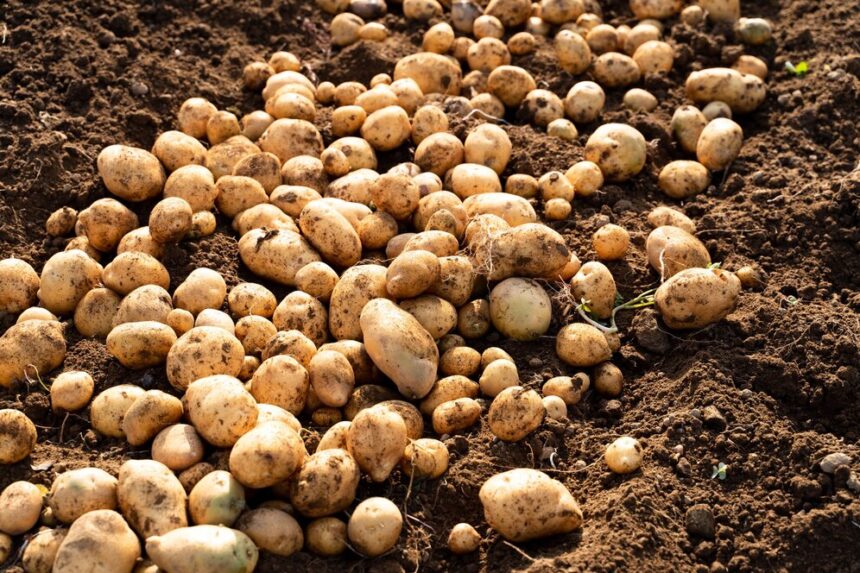Proper storage of potatoes is essential to prevent spoilage, sprouting, and loss of quality. Whether for home use or commercial purposes, choosing the right storage method helps extend their shelf life and maintain their nutritional value. Here are the best storage methods for potatoes.
1. Store in a Cool, Dark, and Well-Ventilated Place
Potatoes should be kept in a dark place to prevent them from turning green due to chlorophyll production, which can make them bitter and toxic. The ideal storage temperature is between 7–10°C. Higher temperatures encourage sprouting, while lower temperatures can cause the potatoes to develop a sweet taste due to starch conversion into sugars.
2. Use Burlap or Mesh Bags
Instead of plastic bags, which trap moisture and promote rotting, store potatoes in burlap sacks, mesh bags, or paper bags. These materials allow for air circulation, reducing humidity buildup and preventing mold growth.
3. Avoid Washing Before Storage
Moisture accelerates spoilage, so it is best to store potatoes unwashed. Dirt acts as a natural protective layer. If the potatoes are wet or freshly harvested, let them dry before storing.
4. Cure Freshly Harvested Potatoes
For long-term storage, freshly harvested potatoes should be cured for 10–14 days in a well-ventilated area at 15–20°C with high humidity (85–90%). This process allows the skin to thicken, healing any cuts or bruises and increasing shelf life.
5. Separate from Onions and Fruits
Potatoes should not be stored near onions, apples, or bananas, as these produce ethylene gas, which accelerates sprouting and spoilage. Keeping them separate helps maintain freshness for longer.
6. Use Storage Bins or Wooden Crates
For bulk storage, wooden crates, cardboard boxes, or well-ventilated storage bins are ideal. Layering the potatoes with straw or newspaper can help absorb excess moisture and prevent rotting.
7. Refrigeration – Only for Certain Uses
While refrigeration is not recommended for long-term storage, if potatoes are stored in the fridge, they should be used for frying or roasting, as cold temperatures convert starch into sugar, affecting taste and texture.
8. Freeze for Long-Term Storage
Potatoes can be frozen, but they must be pre-cooked. Blanching, mashing, or cutting them into fries before freezing helps preserve their texture and prevents discoloration.
9. Dehydration and Dry Storage
For extended storage, potatoes can be dried and stored as flakes or chips. Dehydrated potatoes take up less space and have a longer shelf life when kept in airtight containers.
10. Regularly Check for Spoilage
Periodically inspect stored potatoes and remove any that show signs of rot, mold, or excessive sprouting. This prevents spoilage from spreading to the rest.
Proper storage of potatoes involves keeping them in a cool, dark, and dry place with good ventilation. Using breathable bags, avoiding moisture, and keeping them away from onions and ethylene-producing fruits can significantly extend their shelf life. Whether storing for short-term use or long-term preservation, following these methods ensures potatoes remain fresh and usable for longer.
Join 'Farmers Mag' WhatsApp Channel
Get the latest Farming news and tips delivered straight to your WhatsApp
CLICK HERE TO JOIN






